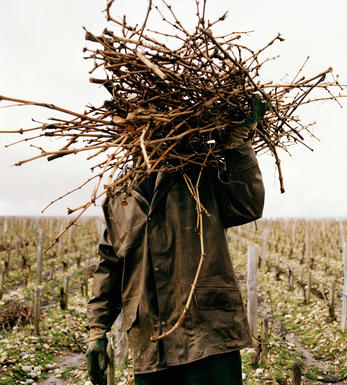
2009 Volnay Santenots du Milieu, Domaine Leroy

Critics reviews
Antonio Galloni - 30/09/2011
About this WINE

Domaine Leroy
Domain Leroy is arguably producing the greatest red Burgundy wines on the Cote d`Or at present. Lalou Bize-Leroy started out as a négociant, working for her family's Maison Leroy, which was founded by her father, Henri. There are three entities to the Leroy empire: the Maison Leroy based in Auxey-Duresses; the Domaine d’Auvenay named for Lalou Bize-Leroy’s own home near St-Romain, and the substantial Domaine Leroy in Vosne-Romanée.
Lalou Bize-Leroy also owns a quarter of Domaine de la Romanée-Conti, where she was co-director until the other shareholders ousted her in 1992, partly because she had started a competing winery. In 1988 Lalou Bize-Leroy purchased the Domaine Charles Nöellat in Vosne Romanée and renamed it Domaine Leroy, which included the buildings and cellars which are now the domaine’s headquarters, and a wonderful array of vineyards including Richebourg, Romanée St Vivant, Clos de Vougeot, premiers crus Vignerondes and Boudots in Nuits and Beaumonts and Brulées in Vosne. The following year further vineyards were purchased from Domaine Philippe Remy, including Clos de la Roche, Latricières-Chambertin and Le Chambertin, while further holdings have been added since.
The domaine has been farmed biodynamically from the start and is now certified by ECOCERT. It was not always easy and the 1993 vintage was certainly a catastrophe with rampant mildew – but they had nobody but themselves to blame, for being behind in their treatments, according to Madame.
The next exciting, if controversial, move was the change in training system for the vines. For some time previously the hedging (rognage) of the vineyards had been done by hand rather than more abrasively by machine. However it is not natural for the vine to be cut back and it affects the vine’s performance both in the current season and the following year, so now, after the flowering, when the shoots are lengthening, they are curled over instead of being cut back. This minimises entrecoeurs and second crop bunches forming, as well as leaving the vine happier and healthier. Nobody could have doubted the well-being of the Leroy vines on the eve of the 2008 harvest.
Horses however are out. Domaine Leroy was among the first to start using horses to plough the vines, but managing the artisans who own and operate the horses proved insurmountable. At one point five different operators were being employed and they still could not be guaranteed to be there at the necessary moment. Now Leroy use little Caval tractors which weigh less than a horse.
Lalou Bize-Leroy has 23 hectares of vines, mostly Premier and Grand Cru classified. In the vineyard Lalou practises biodynamism as well as severe pruning and crop-thinning. The result is ridiculously low yields.
Domaine Leroy is blessed with a heritage of ancient vines, in part because Lalou Bize-Leroy never grubs up and replants. Instead she replaces individual missing vines, from her own cuttings, but never too many at once in a given vineyard. These old vines combined with her training and pruning policy, restricting the bunches to just four per vine, explain in part the concentration of Leroy wines. The average yield across appellations and vintages at Domaine Leroy is around 16 hl/ha, according to Lalou.
In the cellar there is no winemaker (vinificateur) nor oenologist, André Porcheret not having been replaced when he left after the 1993 harvest. The grapes are of such quality that they do not need a winemaker! After rigorous deselection on the sorting tables, which employ as many people as there are pickers, the grapes are placed, stemmed and all, in wooden fermenting vats. After fermentation the wines are matured in new barrels from Cadus and François Frères.
Jasper Morris MW, author of the award-winning Inside Burgundy comprehensive handbook.

Meursault
There are more top producers in Meursault than in any other commune of the Côte d’Or. Certainly it is the most famous and popular of the great white appellations. Its wines are typically rich and savoury with nutty, honeyed hints and buttery, vanilla spice from the oak.
Even though it is considerably larger than its southerly neighbours Chassagne and Puligny, Meursault contains no Grands Crus. Its three best Premiers Crus, however – Les Perrières, Les Genevrières and Les Charmes – produce some of the region’s greatest whites: they are full, round and powerful, and age very well. Les Perrières in particular can produce wines of Grand Cru quality, a fact that is often reflected in its price. Meursault has also been one of the driving forces of biodynamic viticulture in the region, as pioneered by Lafon and Leflaive.Many of the vineyards below Premier Cru, known as ‘village’ wines, are also well worth looking at. The growers vinify their different vineyard holdings separately, which rarely happens in Puligny or Chassagne. Such wines can be labelled with the ‘lieu-dit’ vineyard alongside (although in smaller type to) the Meursault name.
Premier Cru Meursault should be enjoyed from five to 15 years of age, although top examples can last even longer. Village wines, meanwhile, are normally at their best from three to 10 years.
Very occasionally, red Meursault is produced with some fine, firm results. The best red Pinot Noir terroir, Les Santenots, is afforded the courtesy title of Volnay Santenots, even though it is actually in Meursault.
- 305 hectares of village Meursault. The best vineyards include Clos de la Barre, Tesson, Chevalières, Rougeot, Narvaux
- 132 hectares of Premier Cru vineyards (17 in all). The finest vineyards include Les Perrières, Les Genevrières and Les Charmes
- Recommended producers: Comte Lafon, Arnaud Ente, Coche Dury, Guy Roulot, Jean-Philippe Fichet, Patrick Javillier, François Jobard, Michel Bouzereau
- Recommended restaurant: Le Chevreuil

Pinot Noir
Pinot Noir is probably the most frustrating, and at times infuriating, wine grape in the world. However when it is successful, it can produce some of the most sublime wines known to man. This thin-skinned grape which grows in small, tight bunches performs well on well-drained, deepish limestone based subsoils as are found on Burgundy's Côte d'Or.
Pinot Noir is more susceptible than other varieties to over cropping - concentration and varietal character disappear rapidly if yields are excessive and yields as little as 25hl/ha are the norm for some climats of the Côte d`Or.
Because of the thinness of the skins, Pinot Noir wines are lighter in colour, body and tannins. However the best wines have grip, complexity and an intensity of fruit seldom found in wine from other grapes. Young Pinot Noir can smell almost sweet, redolent with freshly crushed raspberries, cherries and redcurrants. When mature, the best wines develop a sensuous, silky mouth feel with the fruit flavours deepening and gamey "sous-bois" nuances emerging.
The best examples are still found in Burgundy, although Pinot Noir`s key role in Champagne should not be forgotten. It is grown throughout the world with notable success in the Carneros and Russian River Valley districts of California, and the Martinborough and Central Otago regions of New Zealand.


Buying options
Add to wishlist
Description
The 2009 Volnay Santenots du Milieu comes across as quite dark and inward. Iron, tar, minerals, earthiness and dark fruit are some of the notes that emerge from this powerful Burgundy. The Santenots du Milieu shows remarkable inner tension and energy, with insistent mineral and floral notes that give lift to the finish. This is another strong effort, but not as exciting as Lalou Bizes 2009s from the C?te de Nuits. Anticipated maturity: 2019-2029.
Antonio Galloni - 30/09/2011
wine at a glance
Delivery and quality guarantee